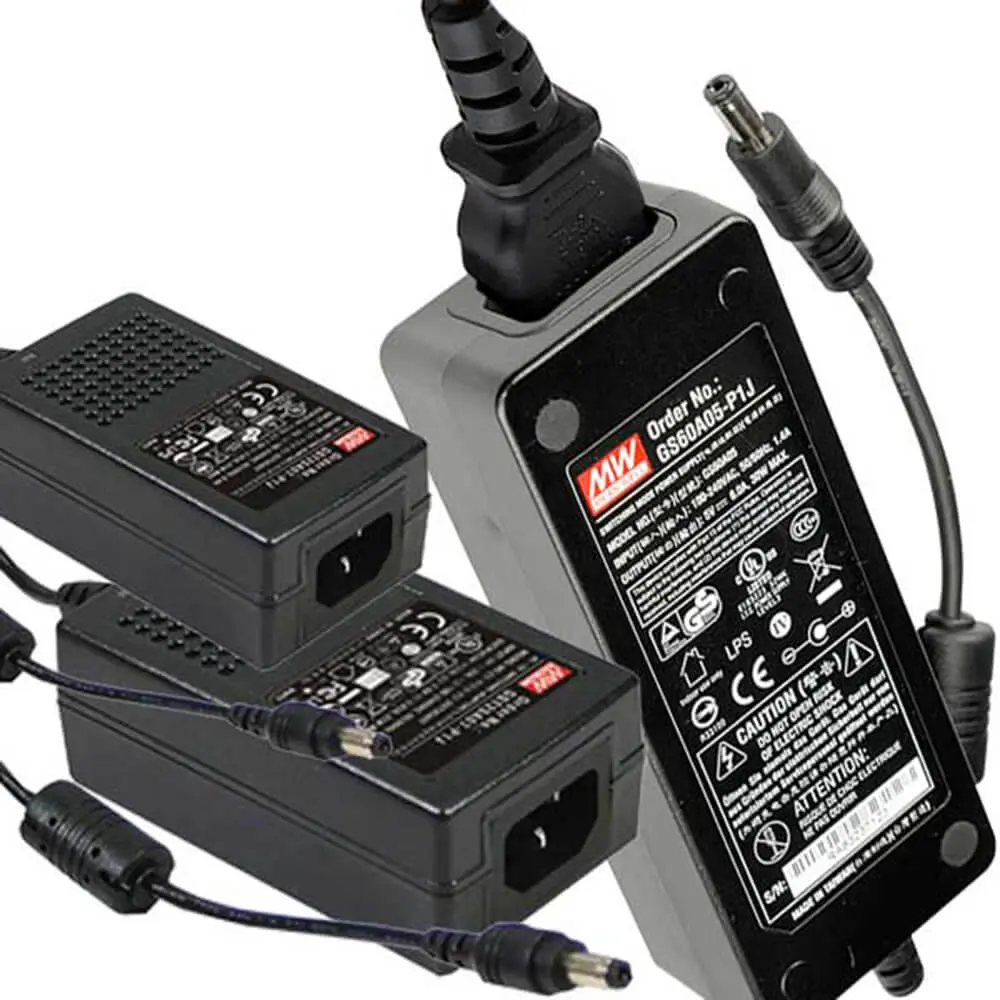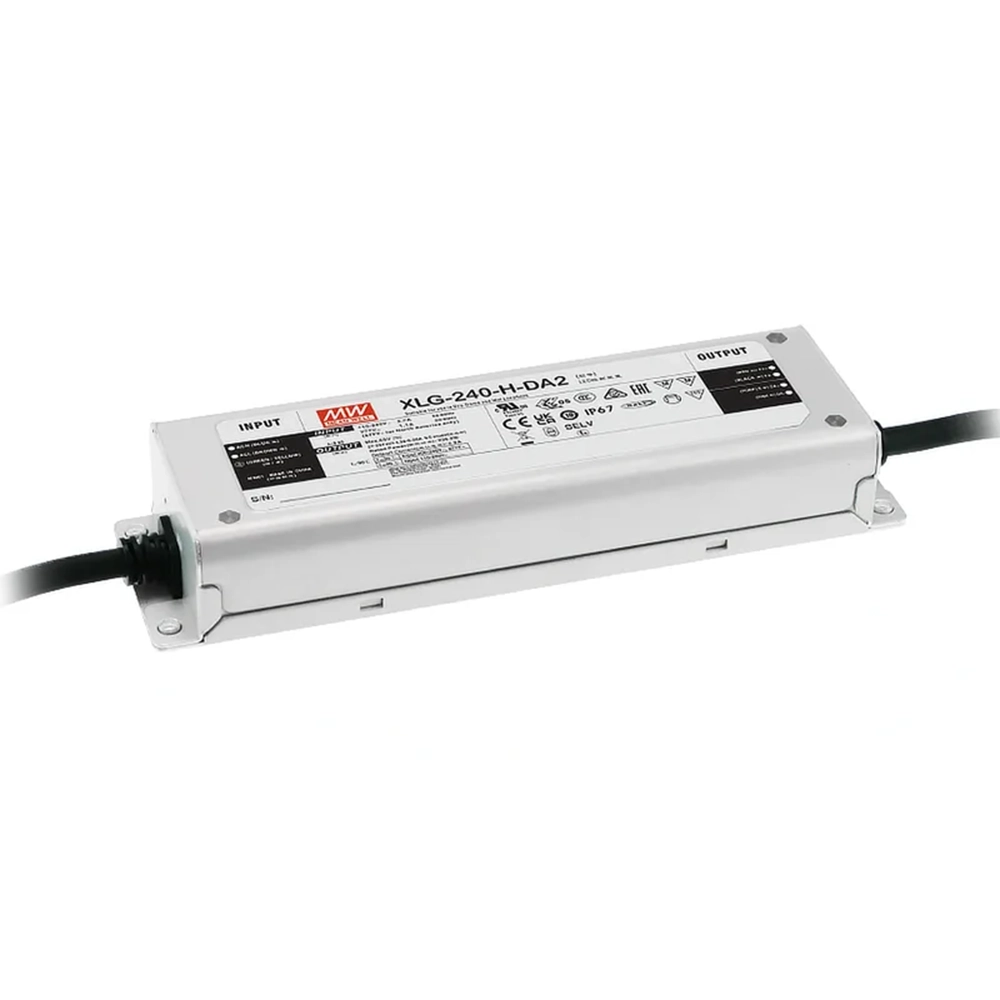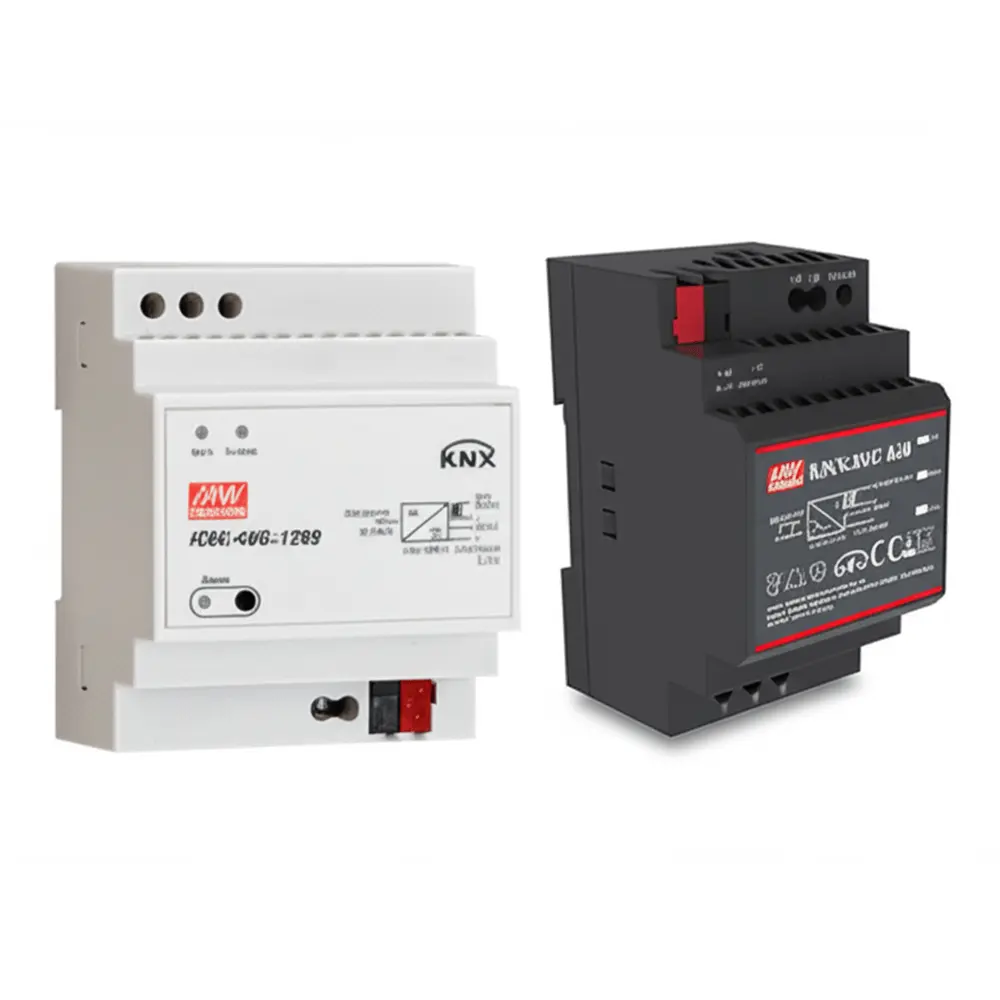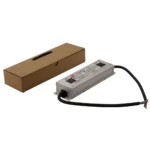
What is LED Driver?
April 1, 2023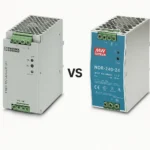
Power Supply Comparison: Phoenix Contact TRIO-PS vs Mean Well NDR-240-24
April 29, 2025What is an AC-DC desktop adaptor?
An AC-DC desktop adaptor, also known as a power adapter or AC adapter, is a device that converts alternating current (AC) from a wall outlet into direct current (DC) suitable for powering electronic devices, such as laptops, smartphones, and other peripherals.
Key Features of AC-DC Desktop Adaptors
- Input Voltage: Desktop adapters are designed to accept a wide range of input voltages, typically from 90V to 264V AC, allowing them to be used internationally with different mains voltages.
- Output Voltage: The output voltage of a desktop adapter is a specific DC voltage that matches the requirements of the connected device, usually ranging from 5V to 48V. Common output voltages include 12V, 19V, and 24V.
- Wattage Rating: Each adapter has a power rating, typically between 30W to 200W, indicating the maximum amount of power it can deliver. This rating must meet or exceed the power requirements of the connected device.
- Connector Types: Desktop adapters come with various connector types to fit different devices. Common connectors include barrel jacks (2.1mm or 2.5mm), USB-C, and proprietary connectors specific to certain brands.
- Safety Features: Quality desktop adapters include safety features such as overcurrent protection, overvoltage protection, and short-circuit protection to prevent damage to both the adapter and the connected device.
Types of AC-DC Desktop Adapters
- Fixed Voltage Adapters: These adapters provide a single fixed output voltage suitable for devices with specific power requirements.
- Variable Voltage Adapters: These adapters allow adjusting the output voltage to match the requirements of different devices, making them more versatile.
- Universal Adapters: These adapters can be used with various devices by offering multiple connector tips or the ability to adjust the output voltage.
- Specialized Adapters: Some adapters are designed for specific applications, such as adapters for medical equipment or adapters with additional features like USB charging ports.
AC-DC desktop adapters are essential for powering and charging electronic devices, ensuring a stable and safe power supply for optimal performance and battery life.
How many socket types of the AC-DC desktop adaptors?
AC-DC adapters come with various socket types, primarily depending on the region and the specific application. Here are the main types of sockets used in AC-DC adapters:
1. AC Input Sockets
These sockets connect the adapter to the mains electricity and vary by region:
– Type A: Common in North America and Japan, featuring two flat parallel pins.
– Type B: Also used in North America, it has two flat pins and a grounding pin.
– Type C: Widely used in Europe, it has two round pins.
– Type D: Used in India and some other countries, featuring three round pins in a triangular formation.
– Type E and F: Common in Europe, with two round pins and an additional grounding pin.
– Type G: Used in the UK and some other countries, it has three rectangular pins.
– Type I: Used in Australia and New Zealand, featuring two flat pins in a V-shape and a grounding pin.
2. DC Output Sockets
These sockets connect the adapter to the device being powered and can vary widely:
– Barrel Connectors: Commonly used for laptops and other devices, available in various sizes (e.g., 2.1mm, 2.5mm).
– USB Connectors: Including USB-A, USB-B, and USB-C, commonly used for smartphones and tablets.
– DIN Connectors: Often used in audio equipment and some older devices.
– Molex Connectors: Common in computer hardware for connecting power to components like hard drives.
The specific socket type for an AC-DC adapter depends on the device’s requirements and the regional standards for electrical outlets. Adapters often come with interchangeable plugs or are designed to accommodate multiple socket types to enhance compatibility across different regions and devices.
What is Mean Well AC-DC desktop adaptor?
Mean Well AC-DC desktop adapters are power supply units designed to convert alternating current (AC) from wall outlets into direct current (DC) suitable for various electronic devices. Mean Well is a well-known manufacturer specializing in power supplies, offering a wide range of models for different applications.
Key Features of Mean Well AC-DC Desktop Adapters
- Input Voltage Range: Typically, Mean Well adapters can handle input voltages from 90V to 264V AC, making them suitable for global use.
- Output Voltage and Current: These adapters provide various output voltages (e.g., 5V, 12V, 24V, 48V) and currents (ranging from hundreds of milliamps to several amps), catering to different device requirements.
- Connector Types: Mean Well adapters often come with standard connectors such as barrel connectors, which are common in many electronic devices, as well as other types depending on the specific model.
- Safety Certifications: Many Mean Well adapters are certified for safety and compliance with international standards, ensuring reliable operation in various environments. For example, some models are EN60601 certified for medical applications.
- Power Factor Correction (PFC): Some models include PFC features, which improve energy efficiency and reduce the load on electrical systems.
Common Models
– GST90A24-P1M: This model outputs 24V at 3.75A, suitable for industrial applications.
– GSM60A05-P1J: A medical-grade adapter providing 5V at 6A, compliant with medical safety standards.
– GST40A12-P1J: Outputs 12V at 3.34A, often used in various consumer electronics.
Mean Well AC-DC desktop adapters are versatile and reliable power solutions for a wide range of applications, including industrial, medical, and consumer electronics, making them a popular choice among manufacturers and DIY enthusiasts alike.
What is the different between Mean Well industrial desktop adaptor and Mean Well medical desktop adaptor?
The differences between Mean Well industrial desktop adapters and Mean Well medical desktop adapters primarily revolve around their design specifications, safety standards, and intended applications. Here are the key distinctions:
1. Safety Standards and Certifications
– Medical Desktop Adaptors: Mean Well medical adapters are designed to comply with stringent safety regulations, particularly the IEC 60601 standard, which is essential for medical electrical equipment. These adapters must meet requirements such as MOPP (Means of Patient Protection) and MOOP (Means of Operator Protection), ensuring low leakage current and high insulation levels to protect patients and operators from electrical hazards.
– Industrial Desktop Adapters: While industrial adapters also adhere to safety standards, they do not require the same level of protection as medical adapters. They are generally designed for robustness and efficiency in industrial environments but do not need to meet the specific medical safety certifications.
2. Design and Construction
– Medical Desktop Adapters: These adapters are built with higher levels of insulation and superior electromagnetic compatibility (EMC) performance to minimize interference with sensitive medical devices. They often feature designs that enhance reliability and longevity, suitable for critical medical applications.
– Industrial Desktop Adaptors: Mean Well industrial adapters focus on durability and performance under varying environmental conditions typical in industrial settings. They may have features like power factor correction (PFC) and are designed to handle higher loads, but they do not include the specialized safety features required for medical use.
3. Applications
– Medical Desktop Adaptors: These are specifically intended for use in medical devices, such as diagnostic equipment, patient monitoring systems, and other healthcare applications where safety and reliability are paramount.
– Industrial Desktop Adapters: These are used in a broader range of applications, including automation, telecommunications, and general electronic equipment within industrial environments. They are designed to support equipment that may not require the same level of safety as medical devices.
In summary, Mean Well medical adapters are specifically designed for healthcare applications with stringent safety requirements, while industrial adapters are built for versatility and robustness in various industrial applications. The choice between the two depends on the specific needs of the application, particularly regarding safety and compliance standards.
How to choose the suitable Mean Well AC-DC desktop adaptor?
When choosing a suitable Mean Well AC-DC desktop adapter, several factors should be considered to ensure that the selected adapter meets the specific requirements of your application. Here’s a guide to help you make an informed decision:
1. Determine Output Voltage and Current Requirements
– Output Voltage: Identify the voltage required by your device. Mean Well adapters come in various output voltages (e.g., 5V, 12V, 24V). Ensure that the adapter’s output voltage matches your device’s specifications.
– Output Current: Check the current requirements of your device. The adapter must provide sufficient current (measured in Amperes) to power the device effectively. It’s advisable to choose an adapter with a current rating higher than what your device requires to ensure reliable operation.
2. Input Voltage Compatibility
– Input Voltage Range: Mean Well adapters typically support a wide input voltage range (90-264V AC). Ensure that the adapter can operate with the voltage available in your region.
3. Connector Type
– Connector Compatibility: Check the type of connector your device requires. Mean Well adapters may come with various connectors, such as barrel connectors or USB. Ensure that the adapter’s connector fits your device.
4. Power Rating
– Wattage: Calculate the total power requirement of your device (Voltage x Current = Watts). Choose an adapter with a power rating that meets or exceeds this requirement to avoid overheating or damage.
5. Safety and Compliance
– Certifications: Look for adapters with necessary safety certifications (e.g., UL, CE, RoHS). This ensures that the adapter meets safety standards and is suitable for your application, especially if it involves sensitive equipment.
6. Environmental Considerations
– IP Rating: If the adapter will be used in a damp or outdoor environment, check its Ingress Protection (IP) rating. Adapters with higher IP ratings (e.g., IP65) are designed to withstand moisture and dust.
7. Special Features
– Additional Functions: Consider if you need features such as power factor correction (PFC), overvoltage protection, or dimming capabilities. Some Mean Well models include these features, which can enhance performance and safety.
9. Application Specifics
– Intended Use: Consider the specific application for which the adapter will be used. Mean Well offers adapters for various applications, including medical, industrial, and consumer electronics. Selecting an adapter designed for your specific application can enhance reliability and performance.
By carefully evaluating these factors, you can choose the most suitable Mean Well AC-DC adapter for your needs, ensuring optimal performance and safety for your electronic devices.
8. Physical Size and Mounting Options
– Size: Ensure that the physical dimensions of the adapter fit your available space. Some models are designed to be compact or wall-mounted, which might be advantageous depending on your setup.
Enocore is the distributor of Mean Well power supply with professional service and on-time delivery.

